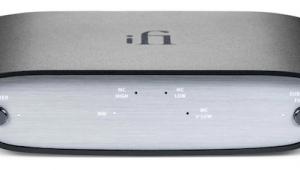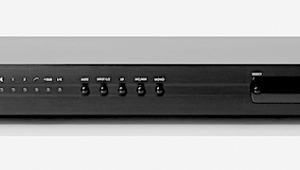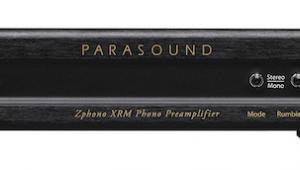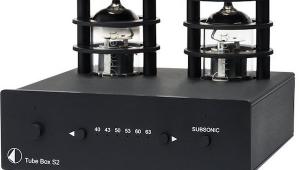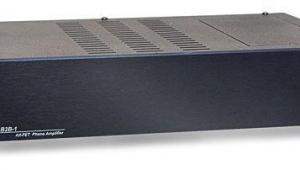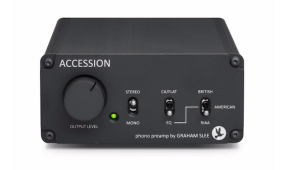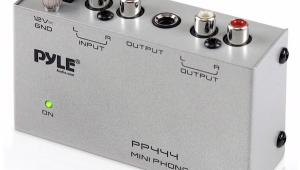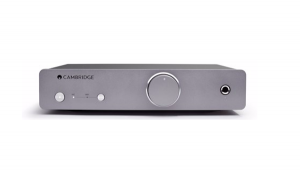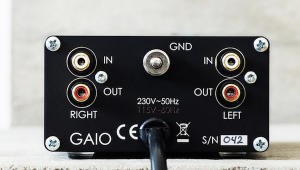Six Acoustic’s Transparent York MM/MC Phono Preamplifier

Six Acoustic launched in the fall of 2019 with a noble goal: to provide the audiophile with the tools to realize the most transparent delivery of their music at reasonable prices. Not only does Steve Meszlenyi have the capacity to do this, he did it years before the company took shape. The product designs aren’t new; they’re years of designs formed whilst in the OEM side of the audio industry. Heavy lifting out of the way, the struggle shifted to choosing a launch product. Originally, he planned to release the X-1200W integrated power amplifier, a 1200 watt two-channel Class D amplifier. However, concerned that customers would hesitate to buy a high-end product from a new company, plans changed. After noticing the vinyl resurgence and the attention it garners, he released the York: a compact phono stage with great flexibility and outstanding performance. What’s the price point? Five-hundred Canadian dollars ($396.46 USD).
You needn’t worry about pairing the York with your phono cartridge. It’s adjustability encourages the use of all. Setting the gain for a moving magnet, moving coil, or moving iron cartridge is straightforward and done via a front panel button, though finetuning is possible with a separate knob. Impedance is adjustable via dip switches at the unit’s underside with a variety of options including 1kΩ, 47kΩ (for moving magnet cartridges), or 17Ω, 20Ω, 91Ω, and 100Ω for moving coil. Capacitance is set in the same manner, now with more options including 0pF, 100pF, 150pF, 220pF, 250pF, 320pF, 370pF, and 470pF. Goodies in the box include an 18V DC power supply, a dip-switch adjustment tool, rubber feet, and a user manual. A remote control’s absence is unattractive (though expected), but the unit itself is anything but that. Measuring 6.5” x 7.2” x 1.2”, the brushed aluminum chassis fits well in modern homes, taking a footprint no larger than a novel. The design is sleek, having only the required adjusters visible. The side panels are a nice touch, with ridges resembling a record’s surface. It’s a piece you want people to see, but is it a piece you want people to hear?
As it went, an AnalogPlanet reader answered that question in an enthusiastic email to Michael Fremer. It read somewhere along the lines of “you’ve got to hear this thing!” Intrigued by the tip, and by the Canadian company he’d never heard of, Michael passed the review over to the also Canadian Nathan Zeller (that’s me if you weren’t sure). I excitedly agreed, thrilled by the idea of writing a new kind of review. A short while later, the unit came into my home. Before I share a month’s findings, let us thank Steve Meszlenyi for allowing a young “newbie” reviewer the opportunity! .
During my listening I used two cartridges: the MoFi StudioTracker and the Ortofon 2M Black LVB 250, both installed on a MoFi StudioDeck. The signal ran through generic interconnects into the York, then to an Onkyo TX-NR626 multi-channel receiver, where the signal eventually met a vintage pair of Technics SB-X700A loudspeakers. It’s an odd combination of components, yet it’s brought me to tears on many occasions, especially with the York.
The Beach Boys - Surfer Girl (APP 060-45)
The double-disc Analogue Productions stereo pressing of Surfer Girl arrived a day before the York. That evening gave me a fresh memory of my under $100 ART DJ Pre II handling the music. When the York found its way into my system, set at 47kΩ and 150pF, I returned to this album. Though before the Ortofon 2M Black LVB 250’s stylus met the record, it first met the stylus cleaner. The sound of the stylus lowering into the melamine foam told plenty about the York’s characteristics. Playing “In My Room” confirms what merely cleaning the stylus suggests. The music tightens right up and detaches a fair amount from the speakers. The song’s outstanding vocals sparkle, extending far beyond the sides of each speaker, thus creating a more convincing recreation of musicians in the room. Dennis Wilson’s drums suddenly possess a height and realism I hadn’t before heard. Rather than the entire drum set being jumbled together, the cymbal now lives above the snare. I know this is how it’s meant to sound.
“The Surfer Moon” proves more impressive than the previous track. A solid image of Brian Wilson appears in the center of the soundstage, soothing my ears with silky vocals. Now with a deeper soundstage than before, the strings also sit closer to the rear, leaving more room for the song's more important instruments.
Fleetwood Mac - Fleetwood Mac (MSK 2281)
“Warm Ways” and “Landslide” show that Fleetwood Mac cared about the recording of their music. It’s a no-brainer to use the two in evaluating the sound of a system. The first thing you’ll hear in “Warm Ways” is toms. Timbrally, the Ortofon and York combination present the toms as lush, lifelike, and believable. As the song continues, the combination handles each instrument with ease. The bass drum’s beat hits deep and fast. The electric guitar floats inside the image, divorced from the speakers. The acoustic guitar follows suit, appearing behind the right speaker rather than within. By the entry of Christine McVie’s vocal you needn’t more goodness, but you get it anyway. As with The Beach Boys’ vocals, she now sings above the instruments. The York peels a layer off haze away too, better showcasing the faint rasp in her voice.
“Landslide” impresses equally, if not more so. Stunning guitar work fills the stage, acting as a base for Stevie Nicks’ vocal expression, which is more intimate and detailed than I’ve heard it thus far. Not her singing, but the raw sound of air passing through her vocal cords is now audible alongside the melody. This detail adds to the “you are there” factor. Also, courtesy of the York, other details are revealed in her singing. Her voice periodically swells in volume, especially as she reaches the higher notes. This is an excellent demonstration of small-scale dynamics: the minor volume changes lasting momentarily. Larger scale dynamic shifts exist within the song as well. When Nicks decides to “take it down,” the entire performance shifts to a gentle conversation, evoking more emotion as the volume once more increases.
Charlie Puth - Voicenotes (572341-1)
“The Way I Am” is a wonderful test for transient accuracy, as its verses feature sixteenth note bass strikes. The York excels as per usual, delivering the tune in a shockingly tight manner and retrieving from the low end a pleasing warmth. As Puth sings higher in the frequency range, the York shows no sign of giving up. These vocals neither overtake the bass or hide behind it. It’s all just there. The York represents all areas of the frequency spectrum. It’s not colored, nor is it clinical. Again, it’s all just there.
Conclusion
Across the board, the York shines in the exact way Six Acoustic intended. It brings your records to life through presenting the remainder of the signal chain with a low distortion and low noise output. A tight adherence to the RIAA equalization curve (± 0.01dB) surely assists as well in the unit’s excellent sound. It’s important to admit I never touched the moving coil stage, as I haven’t a moving coil cartridge to use. However, knowing how Six Acoustic’s promises all overlap with my observations, it’s safe to assume the moving coil stage is as good, if not better than the moving magnet stage. Put simply, the York is a joy to use. Gone are the days where Canadian audiophiles pay ludicrous import fees to feed their audio hunger. Six Acoustic allows you to amplify your musical enjoyment without the financial complications. The company has a bright future and certainly a mighty beginning.

(Nathan Zeller is a Beatles fanatic and budding audiophile found in Western Canada. Currently, he’s inhaling the smoke of the British Columbia wildfires. Nothing like summer, right?)




